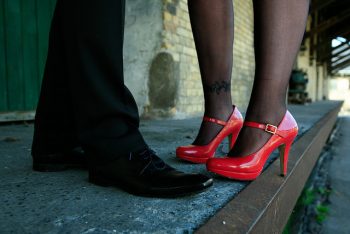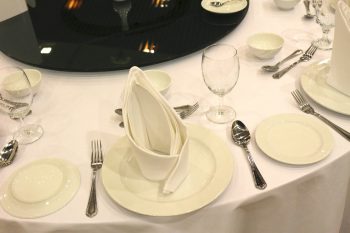Danish Summer Weddings Posted by Bjørn A. Bojesen on Jun 23, 2017 in Traditions
Mange danskere gifter sig om sommeren. (Many Danes marry in the summer.) Having recently been a guest at a Danish bryllup (wedding), I feel a bit more qualified to tell you about this tradition in Danmark.
Of course, it often starts with the classical question: Vil du gifte dig med mig? (Wanna marry me?) Take care, though, so it doesn’t get too awkward when you’re practicing your Danish skills! 😉
If the answer is ja [ya!], the two persons are now called forlovede (engaged ones), since they’re forlovet (engaged). Each one often carries a forlovelsesring (engagement ring). Since 2012 same-sex marriage has been allowed in Danish churches (and outside of churches it has been normal for a long time), so of course, the two persons aren’t always one kvinde (woman) and one mand (man).
A few weeks before festen (the celebration), the (traditionally male) friends of brudgommen (the bridegroom) surprise him and ”abduct” him for a night of crazy activities that often include lots of drinking of alkohol. The (traditionally female) friends of bruden (the bride) do the same for her. This is the polterabend (which is, strangely, a German word rarely used in modern German – meaning ”crash evening”, if I’m not mistaken?) Polterabender sometimes get so extreme that they merit their own post…
Bryllup! Traditionally, a præst (priest) viede (married) brudeparret (the bridal couple) in a kirke (church). During the last decades, vielsen (the wedding ceremony) is often led by a politiker (politician) in a rådhus (town hall) or another non-religious place. This is a borgerlig vielse (civil wedding), which is very popular, since many Danes don’t believe in Gud (God). Of course, in 2017, lots of couples also marry in a moské (mosque), a synagoge or some other tempel.
No matter the ceremony, most people look forward to the moment when the couple receive their ring/e (ring/s) and may kysse hinanden (kiss each other).
Then it’s time to fejre [fire] (celebrate). The bride and the groom’s familiemedlemmer (family members) gather at a nice place to eat, drink, laugh and say skååål (cheers!) Gæsterne (the guests) normally bring some kind of bryllupsgaver (wedding gifts), which are very often things that can be useful in the couple’s future life.
An American guest at the wedding I was invited to, was surprised by the duration and amount of the taler [TAA-lor] (speeches). From an American perspective, I guess, a Danish wedding might look quite “formal”. The speeches – by the couple’s parents, for example – tend to be more subdued and lengthy than a typical American wedding speech (which I guess many Danes would find ”superficially emotional” and filled with too many clichéd ”I love yous”?)
There are too many wedding traditions in Denmark to list them all, but here’s a few:
- at some point, the couple is expected to kiss standing on chairs/below the table
- when the bride/groom leaves the room, members of the opposite sex rush to kiss the remaining groom/bride on the cheek
- late in the evening, it is customary to cut the end of the bride’s slør (veil), as well as the ends of the groom’s strømper (socks) – I think it’s to prevent either one of them from fleeing bryllupsnatten (the wedding night)?

Build vocabulary, practice pronunciation, and more with Transparent Language Online. Available anytime, anywhere, on any device.





